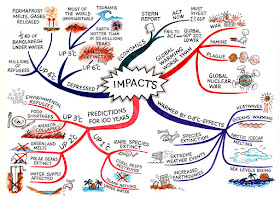Day 31 (New Year's Eve - Thursday 31st December 2015)
Welcome to the last day of 2015 - I hope that on reflection it has been a good year for you and yours. I would like to take this opportunity to wish you a wonderful 2016 - over the course of it may you find yourself pleasantly surprised on a regular basis and achieve more than you desire.
 |
| 31 Planes of existence are defined in Buddhist teaching |
Welcome to the last day of 2015 - I hope that on reflection it has been a good year for you and yours. I would like to take this opportunity to wish you a wonderful 2016 - over the course of it may you find yourself pleasantly surprised on a regular basis and achieve more than you desire.
It gives me great pleasure today to introduce you to Benjamin Fletcher. Although Benjamin and I have never met, he responded to my request for posts in November, we now follow each other on Twitter (his handle is @benjaminclusion); I am delighted to have him here. He is a champion for Diversity and Inclusion and blogs on these and other topics on LinkedIn. He works as an HR Business Partner at QBE Insurance based in London. I love his post, which shares his learning from various managers with whom he has worked over the years.
-----------------------------------------------------
Some of the best lessons we learn come from observing good and great managers and leaders. Some we learn from observing what not to do and how not to treat people. Others we learn from people who we might not like or agree with, but recognise certain strengths in.
I have been managed by some pretty different characters; some of whom I’ve felt a stronger natural affinity with than others. All, though, have given me something valuable for which I am grateful and helped me take my career a step further.
I have been managed by some pretty different characters; some of whom I’ve felt a stronger natural affinity with than others. All, though, have given me something valuable for which I am grateful and helped me take my career a step further.
It can be easy and it is often tempting to list all the things you will never do as a manager yourself, but as a new year approaches it’s a timely opportunity for reflection and self-reflection.
In this spirit, here I want to remember the positive examples – the comet trails – that four influential managers have left with me and share these learnings with the blogosphere.
To save blushes I have renamed each manager after pets I have loved both as a child and an adult.
In this spirit, here I want to remember the positive examples – the comet trails – that four influential managers have left with me and share these learnings with the blogosphere.
To save blushes I have renamed each manager after pets I have loved both as a child and an adult.
Big pictures are made complete by details. We all have attributes that we are proud about and consider our strong suits, as well as known development areas and blind spots. I’m personally quite aware that detail overload does nothing for my attention span or temperament. Scamp, conversely, is a detail whiz. If you get your kicks from being creative and helping other people see a picture not yet complete, incredibly detail focused people can be frustrating, even irritating at times. Scamp taught me to appreciate that small things usually add up to something big, like a George Suerat painting. It’s a hard thing to un-see.
We’re in it together. Ambition means different things to different people. Sophie showed me that ambition is not a dirty word. Through Sophie I also learnt to appreciate what it’s like to feel the security of knowing my manager will not let me fail because my success is their success. With different strengths we won together. Demonstrating that sheer ambition and inclusive leadership work perfectly in tandem, it is a lesson I aspire to replicate.
 |
| The People's Monarch an artwork by Helen Marshall consists of 5,500 individual photos submitted by BBC listeners & viewers |
Relationships are 50/50. So much of success at work is built upon the relationships we foster with those with whom we collaborate day-to-day. Sometimes even when we really like and respect a manager, like Marble, we forget that we’re in a relationship too… and that we’re one half of that relationship. You’ve got to move, share and ask. Managers are not mind readers.
Being human is important. More Rothko than Seurat, Bonnie showed me that managers don’t have to put up a professional façade to be successful. Bonnie gives herself, others – and HR – permission to show personality and emotion. Bonnie schooled me on how being authentic helps you succeed at work.
P.S. for anyone who is curious… Scamp was a hamster who lived to the ripe old age of 5, Sophie was a white Persian butterfly catching cat, Bonnie was an energetic yet wonderfully gentle Collie-Springer Spaniel, and Marble is a very affectionate tortoiseshell cat who recently beat cancer.



































